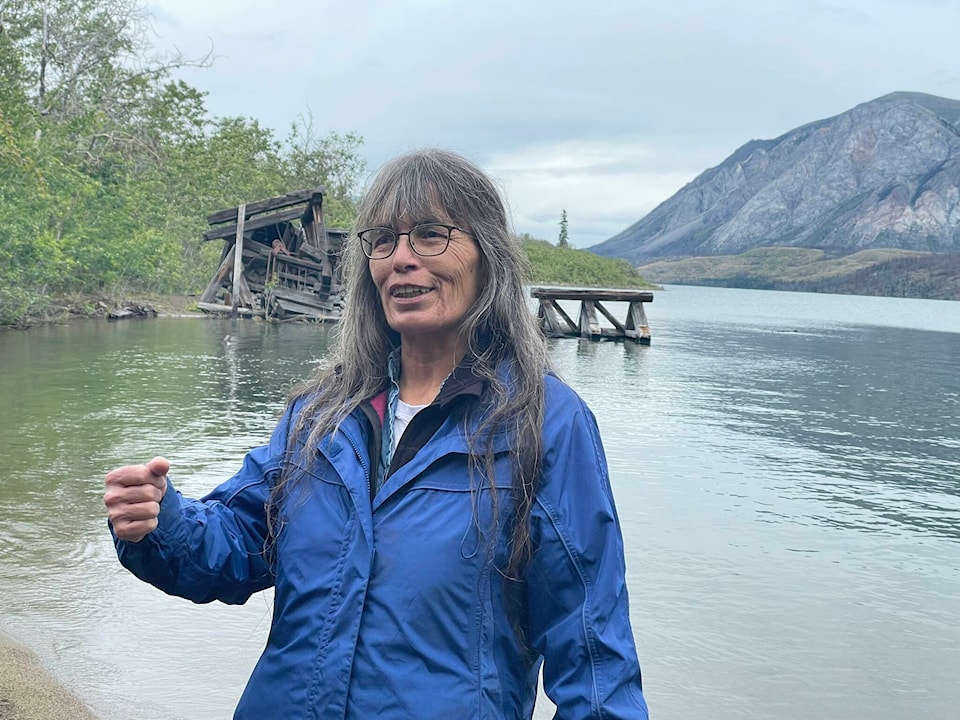The Council of Yukon First Nations (CYFN) welcomed it’s newest associate First Nation government to the leadership table on Oct. 11.
The Taku River Tlingit First Nation from the Atlin/Taku region of northern British Columbia has joined the council.
As associates, the Taku River Tlingit joins five other associate members who can participate in discussions but cannot participate in decision-making.
“CYFN’s practice of welcoming all Yukon and transboundary First Nations to engage in discussions at leadership has led to increased participation among First Nations in recent years,” reads the news release from CYFN.
The move acknowledges relationships that preceded colonial map-making which drew boundaries between the United States, British Columbia and the Northwest Territories. These borders have superseded and complicated traditional relationships and land claims processes for different Yukon First Nation governments, and for the First Nations whose traditional practices extended into and beyond the Yukon.
For example, what is now known as Champagne Aishihik First Nation (CAFN) has always had citizens who live off the land, once theirs, now called Alaska. The traditional territories of the Kaska Nations, the Teslin Tlingit Council (TTC), Carcross/Tagish First Nation (C/TFN) and CAFN all extend south into British Columbia. And the traditional territory of the Taku River Tlingit extends well into the Yukon, overlapping the traditional territories of all the southern Yukon First Nations.
“The separations of [early] First Nations, was mostly through linguistic groups,” said Ron Chambers, a Champagne Aishihik elder, speaking with the News on Oct. 7. “After the agreements, it became more of a political movement than it was as a historical thing.”
Chambers said these lines on maps are hard felt by elders who know how relationships used to be.
“My grandmother could speak five languages fluently, including English. And I think back when it was a little more tasking to communicate, then people wanted to know their neighbours’ languages, and everybody just knew three or four,” said Ghoóch Tlâ Colleen James, a citizen of the Carcross/Tagish First Nation.
She described how people would have to ask permission to rustle up food around their neighbouring areas. The rustling she describes is for salmon, gophers or caribou and other foods harvested from the land. Then conversations would occur about where to harvest and what areas to be left to rest, so the land could restore itself and continue to support the people who lived here.
Depleted food resources and politics has changed much of that. James sits at the treaty table with British Columbia for C/TFN. The British Columbia government website that tracks treaty processes says that they are negotiating with C/TFN, CAFN and TTC. They are in stage four, which is defined as needing to have the overlaps identified and clarified. But there is not one treaty table — they are all negotiating at separate tables.
“That’s that British colonial divide-and-conquer, right?” James said.
James thinks the tables can distract from what’s important. The government wants to talk about “gravel pits, campgrounds, historic sites, mining claims, permits,” James said, while she worries most about the health of the land and the water.
Traditional worldviews at a collaborative table
Some traditional and language-based associations have survived, such as Daḵká, which encompasses the three Inland Tlingit nations of TRT, TTC and C/TFN. They hold celebrations every two years and tie into Tlingit celebrations in Alaska.
In previous decades an argument was made, and lost, with the federal government for a distinctive Tagish Nation. This resulted in the federal construction of the Carcross/Tagish First Nation which took two separate votes to ratify. This was the last agreement to be settled in the Yukon in 2005.
James says that talking in political realms causes people “to see a little bit less of who we are, where we come from.” This is why she only goes to those treaty meetings with an elder to provide wisdom and guidance and to avoid arguing about who owns what.
Elder Norman James believes that overlapping areas provide an opportunity for a strong voice, so that collaborating First Nations can reinforce the importance of traditional practices, seasonal habitat protection, and intermittent pauses to allow species to regenerate and recover.
“That gives the First Nations an opportunity to collaborate and collectively throw down their worldview or the decision or the discussion on a certain topic,” James said.
A similar message is contained in the recent news release from CYFN regarding the Taku River Tlingit.
It reads: “Taku River Tlingit First Nation’s associate membership to CYFN is a significant and symbolic moment that speaks to the sense of inclusivity that exists when we sit together to discuss critical issues affecting Yukon First Nations and transboundary First Nations.”
The Taku River Tlingit’s land agreement was ratified with British Columbia in July 2011. The agreement “created 13 new protected areas and provides resource development opportunities and investment certainty in more than three-million hectares (approximately 11,500 square miles) in the Atlin Taku region of northwestern B.C.,” according a news release and backgrounder from that time.
Five other First Nations are also non-voting associates of the CYFN: the Vuntut Gwitchin First Nation, Tetlit Gwich’in Council, Inuvik Native Band, Ehdiitat Gwich’in Council and Gwichya Gwich’in Council.
It states that the “Taku River Tlingit First Nation’s traditional territory covers over four-million hectares (15,444 square miles) across B.C., Yukon and Alaska, including the Taku River watershed, and the area surrounding Tagish, Atlin, and Teslin lakes. The main Taku River Tlingit community of about 375 members is located in Atlin, B.C.”
The Taku River Tlingit First Nation did not respond to inquires from the News by press time.
READ MORE: Daḵká travel from Atlin and Teslin to Carcross to join in sacred fire
Contact Lawrie Crawford at lawrie.crawford@yukon-news.com
